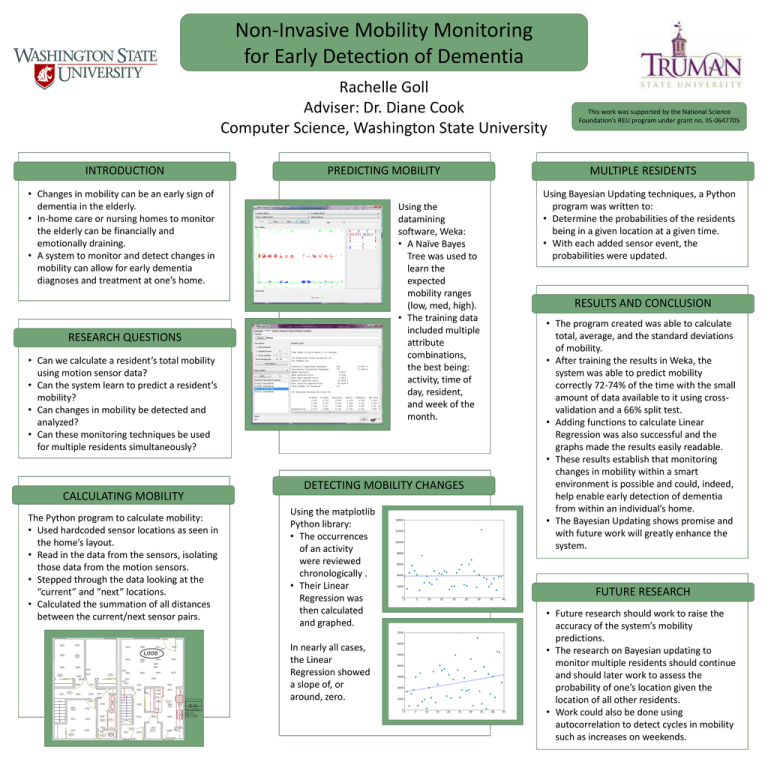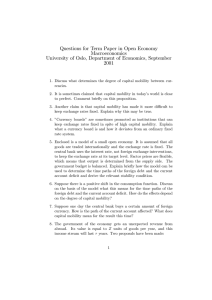Non-Invasive Mobility Monitoring for Early Detection of Dementia Rachelle Goll
advertisement

Non-Invasive Mobility Monitoring for Early Detection of Dementia Rachelle Goll Adviser: Dr. Diane Cook Computer Science, Washington State University INTRODUCTION • Changes in mobility can be an early sign of dementia in the elderly. • In-home care or nursing homes to monitor the elderly can be financially and emotionally draining. • A system to monitor and detect changes in mobility can allow for early dementia diagnoses and treatment at one’s home. PREDICTING MOBILITY Weka Picture RESEARCH QUESTIONS • Can we calculate a resident’s total mobility using motion sensor data? • Can the system learn to predict a resident’s mobility? • Can changes in mobility be detected and analyzed? • Can these monitoring techniques be used for multiple residents simultaneously? CALCULATING MOBILITY The Python program to calculate mobility: • Used hardcoded sensor locations as seen in the home’s layout. • Read in the data from the sensors, isolating those data from the motion sensors. • Stepped through the data looking at the “current” and “next” locations. • Calculated the summation of all distances between the current/next sensor pairs. Weka Picture Using the datamining software, Weka: • A Naïve Bayes Tree was used to learn the expected mobility ranges (low, med, high). • The training data included multiple attribute combinations, the best being: activity, time of day, resident, and week of the month. DETECTING MOBILITY CHANGES Using the matplotlib Python library: • The occurrences of an activity were reviewed chronologically . • Their Linear Regression was then calculated and graphed. In nearly all cases, the Linear Regression showed a slope of, or around, zero. This work was supported by the National Science Foundation’s REU program under grant no. IIS-0647705 MULTIPLE RESIDENTS Using Bayesian Updating techniques, a Python program was written to: • Determine the probabilities of the residents being in a given location at a given time. • With each added sensor event, the probabilities were updated. RESULTS AND CONCLUSION • The program created was able to calculate total, average, and the standard deviations of mobility. • After training the results in Weka, the system was able to predict mobility correctly 72-74% of the time with the small amount of data available to it using crossvalidation and a 66% split test. • Adding functions to calculate Linear Regression was also successful and the graphs made the results easily readable. • These results establish that monitoring changes in mobility within a smart environment is possible and could, indeed, help enable early detection of dementia from within an individual’s home. • The Bayesian Updating shows promise and with future work will greatly enhance the system. FUTURE RESEARCH • Future research should work to raise the accuracy of the system’s mobility predictions. • The research on Bayesian updating to monitor multiple residents should continue and should later work to assess the probability of one’s location given the location of all other residents. • Work could also be done using autocorrelation to detect cycles in mobility such as increases on weekends.





